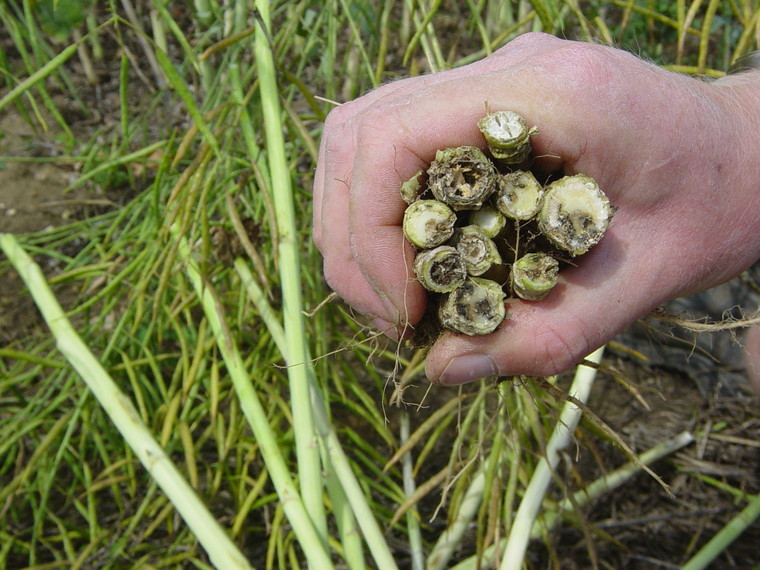“If you were asked what the most common disease in oilseed rape was, what would you say?” asks Neil Groom, technical director for Grainseed. Crop Monitor assesses the frequency and severity of disease each year in rape as well as in wheat and barley. The Spring assessment is done at early stem extension. The data shows very clearly that Phoma affects far more crops and far more plants that Light Leaf spot does every year. All regions had Phoma with the highest incidence being in the eastern region. For light leaf spot the highest regions were the Midlands and the West with the East being the lowest.
| Spring 2017 | Spring 2018 | Spring 2019 | Spring 2020 | |
| % crop affected | ||||
| Phoma | 91 | 90 | 94 | 96 |
| Light Leaf Spot | 68 | 64 | 60 | 73 |
| % plants affected | ||||
| Phoma | 31 | 32 | 46 | 38 |
| Light Leaf Spot | 15 | 15 | 12 |
30 |
| Source – Crop Monitor |
Neil reports that Phoma stem canker can erode yields by at least 0.5 to 1 t/ha, which is worth a lot of money this year with rape prices clearing over £500 with bonuses. It remains the most significant and most costly disease in rape and it should be the disease that most growers should focus on.
“Phoma resistant varieties play a significant role in controlling Phoma and although they may not obviate the need for fungicide treatments altogether, they allow more flexible timings and possibly fewer applications – and a robust start which is all important for rape. Such an integrated approach to disease makes economic sense.”
“Oilseed rape growers should be aware of the varieties which offer good resistance to Phoma. After all they would be fully conversant with wheat varieties with the best Septoria resistance or yellow rust resistance. This information would be part of their decision making. So they should also be conversant with oilseed rape resistance to Phoma. All our varieties have strong Phoma resistance rating and this genetic resistance to Phoma is multi-gene which is more durable. They also have excellent tolerance to verticillium stripe, a disease that has no chemical control options. Es Mambo has a 7.8 rating for Phoma stem canker, and it is a top performing variety in independent AICC verticillium trials. Keeper has a 7 rating for Phoma. “
There are two distinct symptoms of Phoma – leaf spotting and stem canker. The most important source of Phoma infection in the autumn is airborne spores from oilseed rape stubble after harvest. “You need twenty days of rain from the 1st of August to trigger the release of these air-borne spores which then infect newly-emerged oilseed rape plants to produce leaf spots. Unfortunately, August has already started wet. The ascospores are blown some distances but are generally deposited within 300 metres. The most damaging effects of Phoma are seen in smaller plants of susceptible varieties. This is because the fungus has to grow a shorter distance down the leaf petiole to reach the stem base where it forms cankers.”
The fungus spreads within the stem and after 6 months of leaf infection can lead to stem canker. These lesions or cankers encircle the stem and weaken it, causing premature ripening, lodging or even plant death. Neil concludes by saying that controlling Phoma needs careful management including the use of rape varieties with ratings of 7 or above, cultivations, rotations, and the use of suitable fungicides. “Phoma is our most economically important disease of oilseed rape and resistant varieties are important in its control.”




